Human Orbital Spaceflights
![]()
International Flight No. 149Soyuz TM-15RodnikRussia |
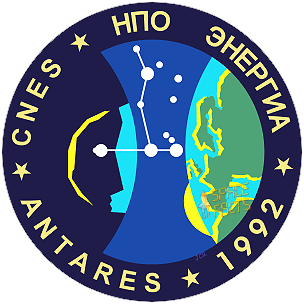 |
![]()
Launch, orbit and landing data
walkout photo |
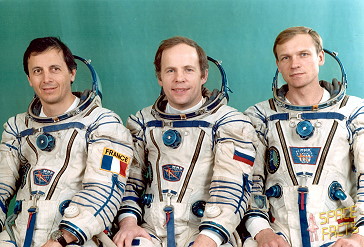 |
|||||||||||||||||||||||
alternative crew photo |
alternative crew photo |
|||||||||||||||||||||||
alternative crew photo |
alternative crew photo |
|||||||||||||||||||||||
alternative crew photo |
||||||||||||||||||||||||
Crew
| No. | Surname | Given names | Position | Flight No. | Duration | Orbits | |
| 1 | Soloviyov | Anatoli Yakovlevich | Commander | 3 | 188d 21h 39m 31s | 2989 | |
| 2 | Avdeyev | Sergei Vasiliyevich | Flight Engineer | 1 | 188d 21h 39m 31s | 2989 | |
| 3 | Tognini | Michel Ange-Charles | Research Cosmonaut | 1 | 13d 18h 56m 20s | 218 |
Crew seating arrangement
|
 |
|
||||||||||||||||
Backup Crew
|
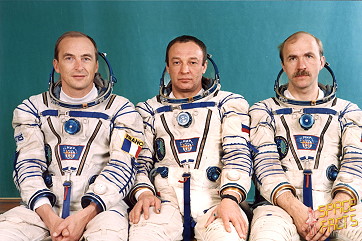 |
||||||||||||||||||||
alternative crew photo |
|||||||||||||||||||||
alternative crew photo |
Hardware
| Launch vehicle: | Soyuz-U2 (No. R15000-053) |
| Spacecraft: | Soyuz TM-15 (7K-STM No. 65) |
Flight
|
Launch from the Baikonur Cosmodrome and
landing 97 km northeast of Arkalyk. Russian cosmonauts Anatoli Soloviyov and Sergei Avdeyev and French Research Cosmonaut Michel Tognini were inserted into an initial 190 x 200 km orbit inclined 51.6 deg. Later on July 27, 1992 they maneuvered to a 223 x 343 km orbit. After a two-day solo flight Soyuz TM-15 docked to the Mir space station on July 29, 1992. Scientific work by the eleventh resident crew followed. Later, Anatoli Soloviyov and Sergei Avdeyev formed the twelfth Mir resident crew. During the French Mir Antares mission, which lasted two weeks, eleven experiments in the fields of biomedicine, physics and technology have been carried out. ORTHOSTATISME concerned the study of blood pressure and cardiovascular regulation, and with the distribution of blood flow in zero gravity. Similarly, the effects on hormones were studied. In the experiment ILLUSION the adaptation of the sensory organs to the space environment was investigated. In NAUSICAA 1 the composition and strength of the radiation field surrounding the astronauts were measured. Further experiments were concerned with the life of cells and effects on the immune system. Crystal growth, the effect of cosmic radiation on electronic components and the behavior of fluids in microgravity were further objects of investigation. After undocking of Soyuz TM-14 (Aleksandr Viktorenko / Aleksandr Kaleri / Michel Tognini) every-day-life on the station started for the twelfth Mir resident crew. The focus was on geophysics, materials science and manufacturing special alloys crystals, biotechnology, astronomy and medical examinations. In addition, the small satellite MAK 2 for Moscow Aviation Institute has been suspended. Progress M-14 arrived at the station on August 14, 1992. The modified Progress-M spacecraft docked at the Kvant port. In place of a tanker compartment, it carried a 700-kg VDU thruster unit designed to be installed atop the Sofora girder mounted on Kvant. The VDU was mounted externally on a special structure between the cargo module and the service module, replacing the OKD fuel section present on normal Progress vehicles. The unit was designed to improve Mir's attitude control capabilities. Commands from the TsUP automatically unloaded the VDU unit on September 02, 1992. The first spacewalk occurred on September 03, 1992 (3h 56m). The two cosmonauts moved the VDU to the work site and prepared the Sofora girder. Almost as soon as Sergei Avdeyev and Anatoli Soloviyov took charge of Mir from Aleksandr Viktorenko and Aleksandr Kaleri they began preparations for a series of EVAs to install the 700-kg (1549-lb) VDU thruster package on top of the Sofora truss on the Kvant1 module. On August 18, 1992 the VDU arrived at Mir's aft port aboard Progress M-14 in a special compartment replacing the normal Progress-M fluid cargo compartment. On September 02, 1992 the TsUP commanded Progress M-14 to "unload" the VDU. On this EVA Sergei Avdeyev and Anatoli Soloviyov installed a locking device on Sofora to hold the truss securely while bent back. They used the Strela boom to move themselves and their equipment about the station. The second EVA was performed on September 07, 1992 (5h 08m). In this spacewalk they bent Sofora back on a hinge at one-third of its length to make its top more accessible, and laid a control cable along the girder. To ease installation, the thruster package deployed from Progress M-14 at an angle matching the top of the bent-back Sofora truss. They laid a 14-m (46-ft) power cable along the truss and attached metal braces to the VDU for securing it to Sofora. Working by flashlight during orbital night, they removed the metal frame containing the tattered remnants of the Soviet flag placed atop Sofora in 1991. Ground stations of independent Ukraine suspended service during the EVA, severely limiting communications between TsUP and cosmonauts. Anatoli Soloviyov and Sergei Avdeyev conducted the third EVA on September 11, 1992 (5h 44m). The cosmonauts attached the VDU to Sofora's top and straightened the truss, then completed electrical connections between the VDU and Mir. VDU installation was originally scheduled to require four spacewalks, but Sergei Avdeyev and Anatoli Soloviyov finished the work in three. The fourth and final EVA was performed on September 15, 1992 (3h 33m). In this EVA the spacewalkers moved the Kurs rendezvous and docking system antenna on Kristall to permit Soyuz TM-16 to dock at the Kristall androgynous docking unit, certifying the unit ahead of a planned docking by the U.S. Space Shuttle. Before returning inside Sergei Avdeyev and Anatoli Soloviyov removed from the base block top array an experimental solar panel that had been exposed to space for 4 years. They also removed micrometeorite panels and samples of construction materials from Kvant2's exterior for return to Earth. The return capsule of Progress M-14 was loaded with about 150 kg of research material just before the undocking. A further material delivery arrived with Progress M-15 in October 1992. Disagreements between Russia and the Ukraine about the Black-sea fleet, the Crimea, monetary matters and the former Soviet army on Ukraine's territory for a long time threatened the functioning of the tracking station Yevpatoriya and other radio stations. Half a year ago Yevpatoriya almost had to cease operations due to lack of money. The French government subsidized the station on request of French astronomers who feared that they would lose the input of the satellite Granat, carrying French experiments under control of Yevpatoriya. During recent EVA's now and then communications between Mir and TsUP were interrupted. As of September 21, 1992, no traffic could be heard on 143.625 mc. This traffic came back on September 29, 1992. Thus far there has been no telemetry on 166 and 165 mc, so possibly the Russians now use a temporary facility on Russian territory. The cosmonauts released the 16.5-kg MAK-2 satellite from the Mir base block's experiment airlock on November 20, 1992. Its purpose was to study Earth's ionosphere. The derelict 550-kg Kosmos 1508 satellite, launched by the Soviet Union in 1983, passed within 300 m of Mir on November 08, 1992. On January 26, 1993 Soyuz TM-16 arrived and created a unique Mir configuration when it docked with the lateral APAS-89 docking unit on Kristall. This tested the unit for future operations. Mir-13 mission Commander Gennadi Manakov was paying his second visit to Mir. Aleksandr Poleshchuk was on his first mission. On January 28, 1993 the cosmonauts carried out Rezonans tests on the Mir complex, which at this time weighed more than 90 tons (its heaviest ever) and included seven separately launched spacecraft. The Mir-12 crew of Sergei Avdeyev and Anatoli Soloviyov returned to Earth on February 01, 1993. The Soyuz TM-15 descent module lowered to Earth beneath low clouds, touched down, and rolled partway down a hillock. It came to rest 150 m from a frozen marsh. The Soyuz spacecraft is composed of three elements attached end-to-end - the Orbital Module, the Descent Module and the Instrumentation/Propulsion Module. The crew occupied the central element, the Descent Module. The other two modules are jettisoned prior to re-entry. They burn up in the atmosphere, so only the Descent Module returned to Earth. The deorbit burn lasted about 240 seconds. Having shed two-thirds of its mass, the Soyuz reached Entry Interface - a point 400,000 feet (121.9 kilometers) above the Earth, where friction due to the thickening atmosphere began to heat its outer surfaces. With only 23 minutes left before it lands on the grassy plains of central Asia, attention in the module turned to slowing its rate of descent. Eight minutes later, the spacecraft was streaking through the sky at a rate of 755 feet (230 meters) per second. Before it touched down, its speed slowed to only 5 feet (1.5 meter) per second, and it lands at an even lower speed than that. Several onboard features ensure that the vehicle and crew land safely and in relative comfort. Four parachutes, deployed 15 minutes before landing, dramatically slowed the vehicle's rate of descent. Two pilot parachutes were the first to be released, and a drogue chute attached to the second one followed immediately after. The drogue, measuring 24 square meters (258 square feet) in area, slowed the rate of descent from 755 feet (230 meters) per second to 262 feet (80 meters) per second. The main parachute was the last to emerge. It is the largest chute, with a surface area of 10,764 square feet (1,000 square meters). Its harnesses shifted the vehicle's attitude to a 30-degree angle relative to the ground, dissipating heat, and then shifted it again to a straight vertical descent prior to landing. The main chute slowed the Soyuz to a descent rate of only 24 feet (7.3 meters) per second, which is still too fast for a comfortable landing. One second before touchdown, two sets of three small engines on the bottom of the vehicle fired, slowing the vehicle to soften the landing. |
EVA data
| Name | Start | End | Duration | Mission | Airlock | Suit | |
| EVA | Avdeyev, Sergei | 03.09.1992, 13:32 UTC | 03.09.1992, 17:28 UTC | 3h 56m | Soyuz TM-15 | Mir - Kvant2 | Orlan-DMA No. 14 |
| EVA | Soloviyov, Anatoli | 03.09.1992, 13:32 UTC | 03.09.1992, 17:28 UTC | 3h 56m | Soyuz TM-15 | Mir - Kvant2 | Orlan-DMA No. 15 |
| EVA | Avdeyev, Sergei | 07.09.1992, 11:47 UTC | 07.09.1992, 16:55 UTC | 5h 08m | Soyuz TM-15 | Mir - Kvant2 | Orlan-DMA No. 14 |
| EVA | Soloviyov, Anatoli | 07.09.1992, 11:47 UTC | 07.09.1992, 16:55 UTC | 5h 08m | Soyuz TM-15 | Mir - Kvant2 | Orlan-DMA No. 15 |
| EVA | Avdeyev, Sergei | 11.09.1992, 10:06 UTC | 11.09.1992, 15:50 UTC | 5h 44m | Soyuz TM-15 | Mir - Kvant2 | Orlan-DMA No. 14 |
| EVA | Soloviyov, Anatoli | 11.09.1992, 10:06 UTC | 11.09.1992, 15:50 UTC | 5h 44m | Soyuz TM-15 | Mir - Kvant2 | Orlan-DMA No. 15 |
| EVA | Avdeyev, Sergei | 15.09.1992, 07:49 UTC | 15.09.1992, 11:22 UTC | 3h 33m | Soyuz TM-15 | Mir - Kvant2 | Orlan-DMA No. 14 |
| EVA | Soloviyov, Anatoli | 15.09.1992, 07:49 UTC | 15.09.1992, 11:22 UTC | 3h 33m | Soyuz TM-15 | Mir - Kvant2 | Orlan-DMA No. 15 |
Note
Photos / Graphics
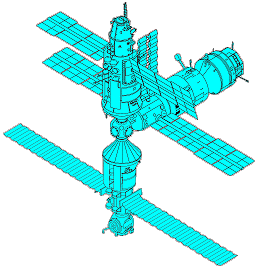 |
 |
 |
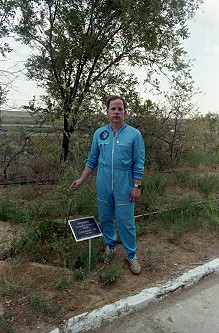
Credit: GTCT |
 |
 |
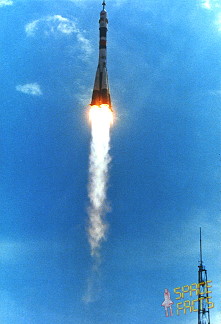 |
 |
 |
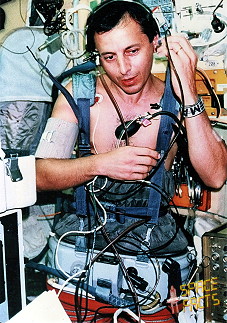 |
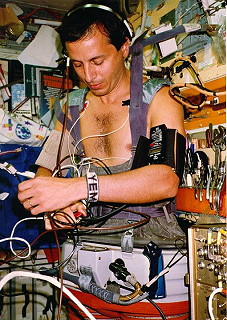 |
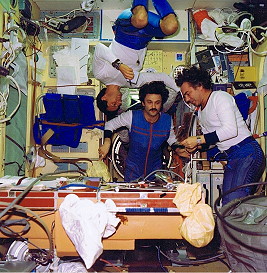 |
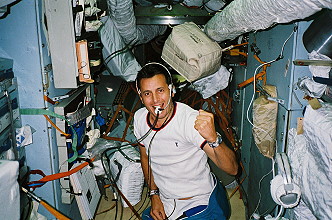 |
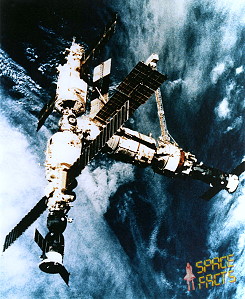 |
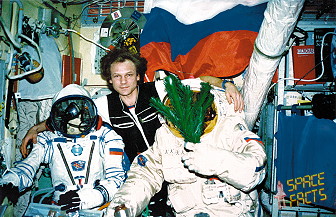 |
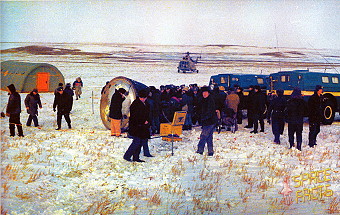 |
| © |  |
Last update on March 31, 2025.  |
 |